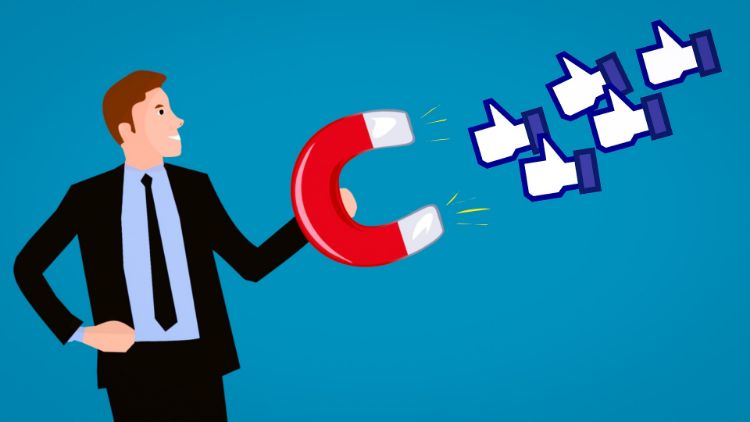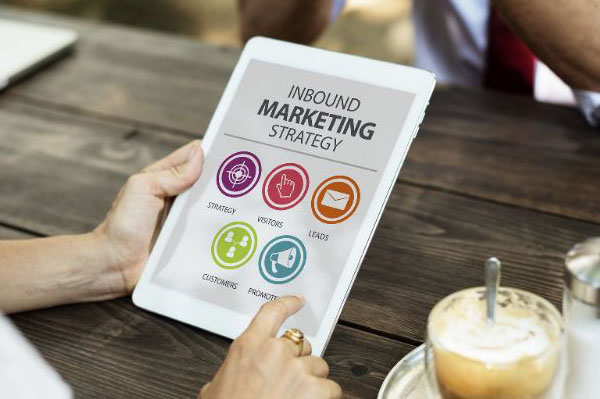We understand the frustration that you feel every time you spend plenty of time and effort raising awareness of your business, only to end up with nothing. At best, you get a couple of views here and there, but nobody really completes the journey that leads up to the actual transaction.
The hard part isn’t that you aren’t an expert, because you are—you know your business inside out. The hard part is letting the world know that, and converting them into leads, then into sales.
If you’ve ever encountered these problems, then maybe it’s time to try out something new. In today’s world, what matters more than what you sell is how you sell your services. Take a pause from your current ad campaign strategy and read on to learn how inbound marketing can work for you.
3 Methods for Improving Your Inbound Lead Generation
- Blogging & SEO
- Lead Magnets
- Community-Based Marketing
What is Inbound Marketing?
Our classic idea of marketing involves advertisements on billboards, television, radio, and print. This is outbound marketing, also known as interruption marketing. It is called such because outbound marketing involves businesses reaching out to potential customers—interrupting audiences by starting an unsolicited conversation. While outbound strategies still have their place in today’s marketing, there’s an alternative that draws warmer leads, often at a lower cost.
Enter inbound marketing: strategies that encourage customers to approach you. It’s the type of marketing that led you to this post because you were looking for a specific type of information. There’s a good chance you found us on Google or were referred here by a friend looking to share some tips.
Inbound marketing is a pull-type of marketing versus a push one.
Here are some examples of inbound marketing that you have probably already encountered while surfing online:
1. Blogs
When you’re after an answer to a question, an instructional for a process you want to master, or advice on a problem you’re having, then you’ve probably turned to blogs. Blogs can either be for personal or commercial use, but in the business world, they’re a core tool for a part of inbound marketing called content marketing.

2. Downloadable resources
You also may have encountered free downloadable templates, checklists or reports while reading something off of a website or in your social feed. These downloadable resources are used to provide basic information about a topic that customers may be interested in.
3. Quizzes
If you’re trying to assess your skills and knowledge, websites provide free quizzes to test your proficiency. It could also be a quiz that does not assess anything, but just want to know your profile based on a series of choices. These quizzes allow customers to interact with your website.
4. Web seminars
Web seminars (or webinars) are valuable, information-packed videos that businesses use to give a crash course on topics related to their industry. Often, these webinars are offered for free for a limited time period to attract customers to participate.
5. Great SEO
Following SEO best practices like having organized web pages and having a well-researched keyword strategy pulls customers organically to your website. While unseen, title tags and metadata are also key in directing customers to your content.
Why Go for Inbound Marketing?
There are many reasons why you should go for inbound marketing to find better leads. Here are the top five most important ones.
1. You position your brand as an authority
To draw people to your business, you have to demonstrate that you have a decent level of expertise in your field. Customers are drawn to brands they feel they can trust. Providing helpful material first can help you in painting your business as a group of experts in your field that have an understanding of customers’ pain points and want to help them.

2. You filter through to people who need your services
Outbound marketing strategies like social ads are helpful in increasing awareness. However, the chances that people will avail of your services by clicking those ads vary. This means that your ROI is also possibly erratic. With inbound marketing, you are sure that those looking for information for a specific service need the service in the immediate future. With a little nudging, they will avail of your services.
3. You create resources that you can use, and re-use
Inbound marketing can be executed in a number of platforms. A series of blog posts on basic home repair, for example, can become the content for an in-depth webinar.
The posts you upload on your website may be repurposed as Facebook content and shared to other social platforms like Twitter or LinkedIn. It’s not just about the content, but also the timing. A blog post you created today may be relevant again months from now. By then you can bring up your posts by resharing them online. This works best when you create evergreen content: foundational information that don’t really change much through time.
4. Your leads turned up better-informed
30-second ads on YouTube or even television can only tell a customer so much. Having inbound strategies gives you the opportunity to educate your leads in different ways. You can educate them about your industry and general line of work. Most importantly, they know exactly what you have to offer.
5. You get immediate data feedback
If you have a website, your backend analytics can already give you insights when it comes to the popularity of your blog posts and the amount of engagement they receive. You will know what people like reading, how long they stay in your website before they bounce or drop-off. This way, you know what type of content to post next time to get them to stay longer and do what you want them to do.
Methods for Inbound Lead Generation
We have prepared three methods that you can follow to start your inbound lead generation.
Method #1 – Blogging & SEO
The most straightforward way to do inbound marketing is to create a blog. Blogging is a useful tool to house online resources that explain your business. You can tell stories about your business—who you are, how you started, and your overall brand mission.
Aside from that, you can easily break down the problems that you aim to address in the market by blogging. Compared to ad copy, the richer the details you have in your blog, the better. Quality blogging can help you to rank on the front page of search engines as well.

To make this effective, you must first identify your core areas of expertise. Have a thorough understanding of what you specialize in versus the rest of the market. This is what helps differentiate you from the hundreds of businesses also marketing to the same set of audiences you want to capture.
You should also write about problems that your customers encounter and your intended solution. Viewers appreciate case studies on blogs, to visualise your process.
Getting yourself immersed in the latest SEO best practices will accelerate the results of your inbound marketing. Know the keyword conventions that are more likely to work for your business. This article can help you with keyword research. Because you are likely banking on Google to rank you, it is best to think as a search engine does.
In a nutshell, Google wants to provide the best answers to make customers happy and answer their users’ questions. Providing reliable information is the first step to thinking like Google, and being rewarded with more visibility in return.
It also helps to pay attention to the word count of your blog posts. In the past, 500 words were enough to get you to the front page. These days, it seems that 1000-2000 word articles work better to achieve results.
It goes without saying that your posts should provide real value. Some companies post the same things you could find on other sites without adding value, while others prefer leaving viewers in suspense to get them to avail their products or services first before providing value. When you’re aiming to give away free information, take full measures: be thorough and informative, and your customers will trust you for it.
Method #2 – Lead Magnets
Lead magnets are a set of interactive features and resources that encourage your market to take actions that bring them closer to closing. These often take the form of downloadable resources like free white papers, checklists, worksheets, or quizzes.
People are usually hesitant when it comes to giving out their personal information like real names and email addresses. Knowing that they will get valuable material when they provide these will help in breaking the barrier.

In order to maximize lead magnets, you first ought to assess your customers’ pain points— – their problems, inconveniences, needs— – and put yourself in their shoes. If you’re in the home repairs business, a step by step guide on temporary fixes may be a good lead magnet for you.
One common gate is getting a person’s email and sending a pdf file of the material through an email marketing platform to that email. Having compelling calls-to-action creates urgency for readers to get your lead magnet and consume the information you provide.
Lead magnets come in many forms. You can draw inspiration from sites like this for possible lead magnets you can try out. You can also create your own version, depending on what you believe would attract the type of audience you want. The baseline for every effective lead magnet is its perceived value to customers and strong calls-to-action to encourage them to reach out to you.
Method #3 – Community-Based Marketing
One advantage that the trades industry has is its ties to communities: where there are people and families, there are homes and goods that will need a tradie’s attention. Inbound marketing is creating a community or neighbourhood in the online space.
Like with every community, community-based marketing are efforts to position your brand as a resource for your surrounding community and create a sense of community around your business. You want to be known as the expert in your trade, and the business everyone calls when addressing a particular problem.
Having a community that supports you means having the opportunity to be linked to other communities as well, whose pain points are similar. In the online space, this means having hundreds of people rate you five stars on your social feed, and the only thing you need to do is make them like you.

You can easily implement this by using social media. Be active on people’s feeds and be visible on their networks by posting and commenting valuable information. You can also create a support or help group for existing and potential clients where people can crowdsource information regarding a problem. Don’t worry about giving away free help—for big problems, you’ll be top-of-mind.
Your role in the online community will be facilitating these conversations as well as providing value-added on top of what others have already recommended. Constantly engage them with or without problems by giving nuggets of wisdom or advice that they may need in their day-to-day.
Your past and existing clients are valuable members of your community. Encourage them to talk about your business, and refer you to their friends, family, and co-workers. People often talk about their existing problems casually. It is powerful to be the top-of-mind recommendation for your specific trade. It is easier to refer you in casual conversations.
It helps a great deal to create community initiatives that have no agenda. Customers are loyal to companies who do good for their communities. Take advantage of this to build a good and lasting impression. Not only will this boost your sales, but it will boost your intangible assets – the love people have for your business.
Conclusion
Inbound marketing is a simple yet effective way to increase your leads. It doesn’t take as much time and resources because you are simply sharing what you already know and have to an audience that needs your services. It is giving your customers the opportunity to start conversations with you; you just need to be present.
In this digitally-driven world, people often feel that they’re interacting with ads and posts versus actual human beings. Your inbound marketing strategy is to make them feel that you understand and empathise with them. How human you make them feel when they read and receive your content is what will drive them to choose you among the rest.








